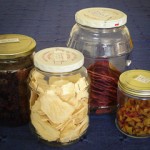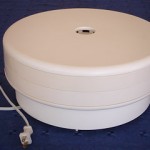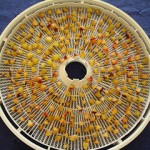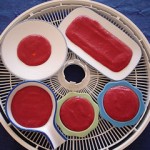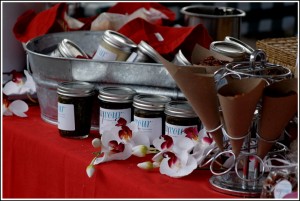Food dehydration at home is the oldest and easiest way of preserving food. Dried food is stored at room temperature, often in reused glass jars, making it an energy-wise preservation method. Dehydrated foods are convenient and have a long shelf life. Because of water evaporation, shrinkage happens and dried foods are more compact than their fresh counterparts, requiring less storage space and weighting less. Drying prevents food spoilage because bacteria, yeasts and molds need the water in the food to grow. Most of the nutritional value is retained if the food is not exposed to high temperatures. Dried food is nutritionally more dense, as the fibers, complex carbohydrates and sugars end up being more concentrated.
Why not dehydrate your own fruits in preparation to make your Thanksgiving fruit cake? Make kale chips and tomato crackers for the lunch box? Dry apples and fruit and nuts “leathers” for healthy snacks?
The simplest drying method is to slice fruits and vegetables and lay them on a dehydrating tray (or a cookie sheet lined with waxed paper or parchment paper): apples, bananas, nectarines, plums, watermelon, cantaloupe, carrots, celery, cucumber, eggplant, onions, peppers, zucchini. Grapes can be dried whole to make raisins. Some produce require some pre-treatment like steaming before drying them. Fruit leathers are made from fruit purees, with the optional addition of ground nuts, which are spread on solid trays coated with oil. Drying times range from a few hours to a few days.
Open air drying using sun and wind has been practiced since ancient times to preserve food. A solar or electric food dehydrator speeds the drying process and ensure more consistent results. Drying temperature for most fruits, vegetables and herbs are in the range of 95 to 145 degree Fahrenheit. A home oven can be used but requires some workarounds as the automatic controls usually do not go under 170F. The oven can be pre-heated, then turned off, keeping only the oven light on, to generate a low level heat, or keeping the oven on the lowest setting, keeping the door partially open.
Use freshly picked fruits and vegetables with high vitality, at the desired stage of ripeness, bought fresh from the market, for best results. Find one of the many dehydrating guides available on the web for specific instructions.

